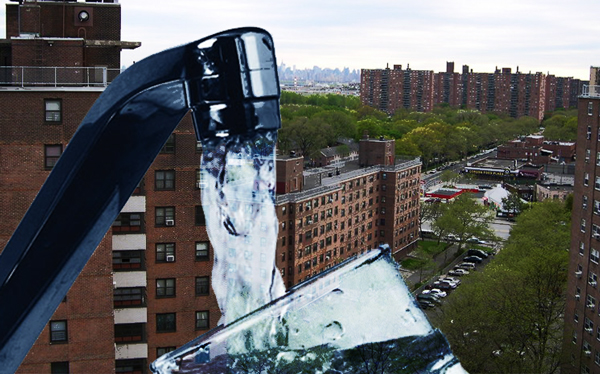Trending
No major spike in lead kit requests, even after recent investigative reports
Reuters probe found 69 census tracts where small children had elevated lead levels in blood

On Nov. 14, Reuters published a massive two-year investigation into the still-lingering problem of toxic lead in communities nationwide, with a special report examining the myriad of shortcomings in New York City.
Although New York has made significant progress over the decades in reducing lead exposures in residential homes and in other places where small children are vulnerable, reporters found that there were 69 census tracts across the city where at least 10 percent of small children had elevated levels of lead in their blood during an 11-year study period.
Meanwhile, City Hall and the New York City Housing Authority have been taking a beating from critics for lying about performing mandatory lead inspections at public housing complexes.
Despite this, there was only a modest increase in 311 requests for tap water lead testing kits from the city’s Department of Environmental Protection during the month of November, an analysis by The Real Deal found.
During the Flint, Michigan water crisis in 2015, when 5 percent of children across that city were found to have unsafe levels of lead in their blood — half the rate in Reuters study — kit requests in New York spiked significantly. DNAinfo reported last July that awareness of the Flint water crisis and problems in other communities nationwide helped account for a 600 percent year-over-year jump in lead kit requests in New York City during the first half of 2016.
On Nov. 14, the date that Reuters published its story, 63 requests for lead kits were made. It was the highest number of requests made since May, but still just the 14th highest-tally of any day this year. Requests have since fallen. By comparison, there were 829 requests filed during just 48 hours in late March of last year, after USA Today published a series of reports on the nearly 2,000 American water systems that still had excessive lead levels.
It’s possible that the recent stories have not had enough time to sink in, or, because they are less-focused on water than past reports, that water kits are not on people’s minds. But Louis Bailey, a community organizer at WeAct, a group that has led lead awareness campaigns since 2007, thinks it’s at least partly due to frustration with 311.
“I think they’ve lost a little bit of faith in that process,” Bailey said. People are now more likely to go directly to medical professionals with concerns rather than try to get their water tested through a 311 call, he said. “The system needs to be revamped.”
A spokesperson for DEP would only confirm that the department issues free water testing kits but did not answer other questions about how the kit requests are counted.
Water is just one part of the equation. Lead exposure often comes from chipping paint or dust in buildings and homes, and tenants can also report peeling paint in residential buildings through 311.
Roy Sarin, the owner of New York Lead Experts, which inspects buildings for prominent owners such as Fortis Property Group and AREA Property Partners, said he hasn’t noticed new any business from landlords wanting inspections for their tenants in the days following the reports. “It’s really been fairly the same. I’ve not really seen any big increase,” he said.
Some of Sarin’s colleagues, however, who bid for public contracts, have seen more jobs coming in, he said, including for NYCHA. “They’re outsourcing some of that,” he said.
On Nov.15, the city’s public advocate Letitia James called for NYCHA’s chair, Shola Olatoye, to be canned after the city’s Department of Investigations concluded that Olatoye had lied when she affirmed her agency had followed annual lead paint inspection guidelines when in reality it had not. Mayor Bill de Blasio has continued to defend Olatoye, even though he now admits to knowing NYCHA had falsified its inspection documents as early as 2016, too.
Though the overall trend from the last several decades shows that the problem of dangerous lead is a downward one, exposures, which can cause irreversible brain damage in small children, still persist, and the rate at which exposures are dropping has nearly grinded to a halt in recent years, the Reuters report found. “It’s a citywide issue, whether its public housing or private,” Bailey said.




